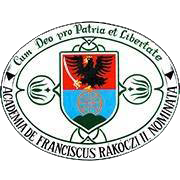Please use this identifier to cite or link to this item:
https://dspace.kmf.uz.ua/jspui/handle/123456789/2828| Title: | Demográfiai helyzetkép Északkelet-Magyarországon az 1831-es kolerajárvány idején |
| Other Titles: | The demographic situation in North-East Hungary at the time of the cholera epidemic in 1831 |
| Authors: | Dancs György Данч Юрій Danch Yurii |
| Keywords: | kolerajárvány;1831;demográfia;Észak-Kelet Magyarország;morbiditás;mortalitás;letalitás |
| Issue Date: | 2020 |
| Publisher: | „RIK-U” Kft. |
| Type: | dc.type.researchStudy |
| Citation: | In Berghauer Sándor et al. (szerk. biz.): Társadalomföldrajzi folyamatok Kelet-Közép-Európában: problémák, tendenciák, irányzatok. Nemzetközi földrajzi konferencia Beregszász, 2020. március 26–27. Tanulmánykötet. 1. kötet. Ungvár, „RIK-U” Kft., 2020. pp. 73-81. |
| Abstract: | Magyarországot az 1831-es első kolerajárvány előtt is számos járványos
megbetegedés sújtotta, melyeknek jelentős hatása volt az ország demográfiai
helyzetére. Mivel a népszámlások hosszú időszakon keresztül elmaradtak,
ezért átfogó alapanyag hiányában a demográfiai helyzet rekonstruálása történetírói-demográfusi feladat lett. Ezzel a munkával be szeretném mutatni a
járvánnyal elsőként szembesülő északkeleti országrészben – különös tekintettel Ung, Bereg, Ugocsa és Máramaros vármegyékben – a betegség terjedésének körülményeit és annak összetett demográfiai hatását: a lakosságszám
és a halálozás arányainak változásait, a morbiditás, a mortalitás és a letalitás
viszonyait, illetve összehasonlítását a különböző országos viszonyokkal. Abstract. The cholera epidemic of 1831 had severe social and economic consequences in Hungary. The outbreak first appeared in the northeast of the country, spreading from the Galician border to its internal areas. Deficiencies in disease control among the population were responsible for nearly half a million infected people and a quarter million deaths. From the beginning of the 19th century, population censuses, which could provide accurate data, are not available in Hungary. There was no census between 1787 and 1870, and numerous attempts were made to reconstruct the demographic situation in order to fill the shortcomings of this long period. By examining these works together with the reports concerning the number of the population and the spread of the disease submitted to the Royal Council of Governors at the time of the first cholera epidemic, I would like to introduce the conditions of the spread of the disease, the changes in population ratios, the local conditions of morbidity, mortality, and lethality, with a special attention to Ung, Bereg, Ugocsa, and Máramaros counties. I also aim at comparing the data with similar regional and national data. |
| Description: | https://kmf.uz.ua/wp-content/uploads/2020/09/final_1_kotet-foldrajzfkonf-2020-07-14.pdf https://opac3.brff.monguz.hu:443/hu/record/-/record/bibBRF00008119 |
| URI: | https://dspace.kmf.uz.ua/jspui/handle/123456789/2828 |
| ISBN: | 978-617-7868-13-1 (T. 1) 978-617-7868-12-4 |
| metadata.dc.rights.uri: | http://creativecommons.org/licenses/by-nc-nd/3.0/us/ |
| Appears in Collections: | Dancs György Társadalomföldrajzi folyamatok Kelet-Közép-Európában: problémák, tendenciák, irányzatok – 1. kötet |
Files in This Item:
| File | Description | Size | Format | |
|---|---|---|---|---|
| Dancs_Gyorgy_Demografiai_helyzetkep_eszakkelet_magyarorszagon_az_1831_es_kolerajarvany_2020.pdf | In Berghauer Sándor et al. (szerk. biz.): Társadalomföldrajzi folyamatok Kelet-Közép-Európában: problémák, tendenciák, irányzatok. Nemzetközi földrajzi konferencia Beregszász, 2020. március 26–27. Tanulmánykötet. 1. kötet. Ungvár, „RIK-U” Kft., 2020. pp. 73-81. | 492.89 kB | Adobe PDF | View/Open |
This item is licensed under a Creative Commons License





